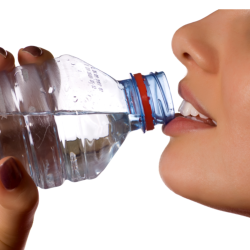Don’t rely on Sit-ups Alone for Reducing that Belly Fat
While many “diet and exercise programs” would lead you to believe you can, the cold hard truth is no, you can’t reduce belly fat by doing sit-ups. Reducing fat in just the abdominal area is touted as spot reducing, but the body does not work that way. The only way to lose belly fat is to reduce the fat from your entire body. In the process, a certain amount of fat lost will come from your abdominal area.
Body fat is your body’s “rainy day account”. During the good times when food is plentiful, we store fat so we have an excess supply to use as energy during the lean times. Unfortunately in many people, the belly is one of the first places fat gets stored.
The Value of Abdominal Exercises to Reduce Belly Fat
As noted, doing sit-ups does no good as far as losing belly fat, but they (and their close cousin crunches) are beneficial at strengthening your abdominal core muscles. And a strong core means better posture and less potential for back problems. A strength training routine performed a couple times a week will greatly improve your abs. You want your “six-pack” to shine through once you lose your belly fat.
We know that to lose a pound of weight per week, you have to burn more calories than you consume – 3,500 to be exact. We also know there are two ways to have a calorie deficit, working out and eating foods lower in calories (or a combination of both which actually works the best).
Working Out to Reduce Belly Fat
To burn the maximum amount of fat, two things have to happen. One, you have to increase your heart rate by performing a warm-up routine so your muscles are getting the maximum amount of oxygen. Two, you have to exercise your body as hard as possible (while monitoring your target heart rate) by doing intense workouts, such as cardio exercises, going on long runs or bicycling a long way.
Eating Fewer Calories to Reduce Belly Fat
Not all calories are created equal. Your focus should be on eating food low in saturated fat and carbohydrates, but high in fiber and protein. Such broad choices include fresh fruits and vegetables, whole grain products, seafood, beans and lean meats to name a few. And don’t forget to add in some of the good fats – the poly and monounsaturated fats. These come from olive oil, fatty fish such as tuna and salmon, nuts and avocados.
By lowering your overall body fat percentage, some of your loss will be belly fat. To accomplish the loss, eat healthy and exercise as defined in this article.
You can find more “Belly Fat Success Tips” in our weight loss category found at http://myfitnessnut.com and while you’re they, be sure to subscribe to our monthly fitness newsletter and be kept up to date on the latest developments in the world of health and fitness.









